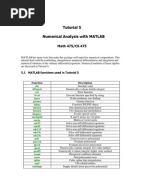An Introduction To Partial Differential Equations With Matlab Solution Manual
Students Solutions Manual PARTIAL DIFFERENTIAL EQUATIONS with FOURIER SERIES and BOUNDARY VALUE PROBLEMS Second Edition NAKHLE H.ASMAR´ University of Missouri.
. Aland Islands. Albania. Andorra.
Armenia. Austria. Azerbaijan. Belarus. Belgium. Bosnia and Herzegovina. Bulgaria.
Croatia. Cyprus. Czech Republic. Denmark.
Estonia. Finland. France. Georgia. Germany. Gibraltar.

Greece. Greenland. Holy See (Vatican City State). Hungary.
Iceland. Ireland.
Italy. Latvia. Liechtenstein. Lithuania. Luxembourg.
Macedonia. Malta. Moldova. Monaco. Montenegro.
Netherlands. Norway. Poland. Portugal.
Romania. Russia. Serbia. Slovakia. Slovenia. Spain. Sweden.

Switzerland. Turkey.
Ukraine. United Kingdom.
American Samoa. Australia. Bangladesh.
Bhutan. British Indian Ocean Territory.
Brunei. Cambodia. China. Christmas Island. Cocos (Keeling) Islands. Cook Islands. Fiji.
Guam. Hong Kong. India. Indonesia. Japan. Kazakhstan. Korea (the Republic of).
Kyrgyzstan. Laos. Macao. Malaysia.
Maldives. Mongolia.
Myanmar. Nepal. New Zealand. Pakistan. Papua New Guinea.
Philippines. Samoa. Singapore. Solomon Islands.

Sri Lanka. Taiwan. Tajikistan. Thailand. Timor-Leste.
Tonga. Turkmenistan.
Uzbekistan. Vanuatu. Vietnam. Description Our understanding of the fundamental processes of the natural world is based to a large extent on partial differential equations (PDEs). The second edition of Partial Differential Equations provides an introduction to the basic properties of PDEs and the ideas and techniques that have proven useful in analyzing them.
It provides the student a broad perspective on the subject, illustrates the incredibly rich variety of phenomena encompassed by it, and imparts a working knowledge of the most important techniques of analysis of the solutions of the equations. In this book mathematical jargon is minimized. Our focus is on the three most classical PDEs: the wave, heat and Laplace equations. Advanced concepts are introduced frequently but with the least possible technicalities. The book is flexibly designed for juniors, seniors or beginning graduate students in science, engineering or mathematics. Chapter 1: Where PDEs Come From 1.1 What is a Partial Differential Equation?. Numerous exercises, varying in difficulty.
Frequent mention of wave propagation, heat and diffusion, electrostatics, and quantum mechanics puts PDE into context, which is especially important for engineering and science majors. Rational organization of material: from science to mathematics, from one dimension to multidimensions, from full-line to half-line to finite interval, etc.
University Of Oslo
Companion solutions manual allows students to see detailed worked out solutions. Introduction to nonlinear PDEs (Chapter 14) provides the student with a taste of the most important problems studied today by researchers in mathematics and science. Provides appropriate introduction to numerical analysis (Chapter 8). Organization gives instructors flexibility in chapter coverage; for example, one can go from Chapter 6 to Chapters 7 and 12 (Green’s functions and distributions), Chapters 13 and 14 (science and nonlinear PDEs), Chapter 8 (numerical), Chapter 9 (waves), or to Chapter 10 (disks, spheres).
Table of Contents Introduction What are Partial Differential Equations? Reviews 'This is an excellent textbook first, the book can be used by a person who has no interest in MATLAB at all, and, second, this book deserves to be considered by—in fact, should be at the top of the list of—any professor looking for an undergraduate text in PDEs. There are several reasons why I view this book as being in the upper echelon of undergraduate PDE textbooks. One is the extremely high quality of exposition.
Sintef
Coleman writes clearly and cleanly, with a conversational tone and a high regard for motivation. He clearly has a great deal of experience teaching this subject and has learned what points are likely to cause confusion and therefore need expanded discussion. The author also employs the nice pedagogical feature of page-long ‘preludes’ to each chapter, which not only summarize what the chapter will cover and how it fits into the general theme of things, but also typically provide some brief historical commentary as well. In general, the overall effect of this book is like listening to a discussion by a good professor in office hours. Very highly recommended. I don’t know when or if I will ever teach an undergraduate PDE course, but if I ever do, this book will certainly be on my short list of possible texts.' —Mark Hunacek, MAA Reviews, September 2013 Praise for the First Edition: 'The strongest aspect of this text is the very large number of worked boundary value problem examples.'
— SIAM 'This is a useful introductory text on PDEs for advanced undergraduate / beginning graduate students of applied mathematics, physics, or engineering sciences. A nice introductory text which certainly is of great use in preparing and delivering courses.' — Zentralblatt MATH 'Readers new to the subject will find Coleman’s appendix cataloguing important partial differential equations in their natural surroundings quite useful. Coleman’s more explicit, extended style would probably allow its use as an advanced graduate or reference text for UK engineers or physicists.'
A Tveito
— Times Higher Education 'The book presents very useful material and can be used as a basic text for self-study of PDEs.' — EMS Newsletter 'Each chapter is introduced by a ‘prelude’ that describes its content and gives historical background. Each section concludes with a set of exercises, many of which are marked MATLAB.' CRC Press eBooks are available through VitalSource. The free VitalSource Bookshelf® application allows you to access to your eBooks whenever and wherever you choose.
The Bookshelf application offers access:. Online – Access your eBooks using the links emailed to you on your CRCPress.com invoice or in the 'My Account' area of CRCPress.com. Mobile/eReaders – Download the Bookshelf mobile app at VitalSource.com or from the iTunes or Android store to access your eBooks from your mobile device or eReader. Offline Computer – Download Bookshelf software to your desktop so you can view your eBooks with or without Internet access.